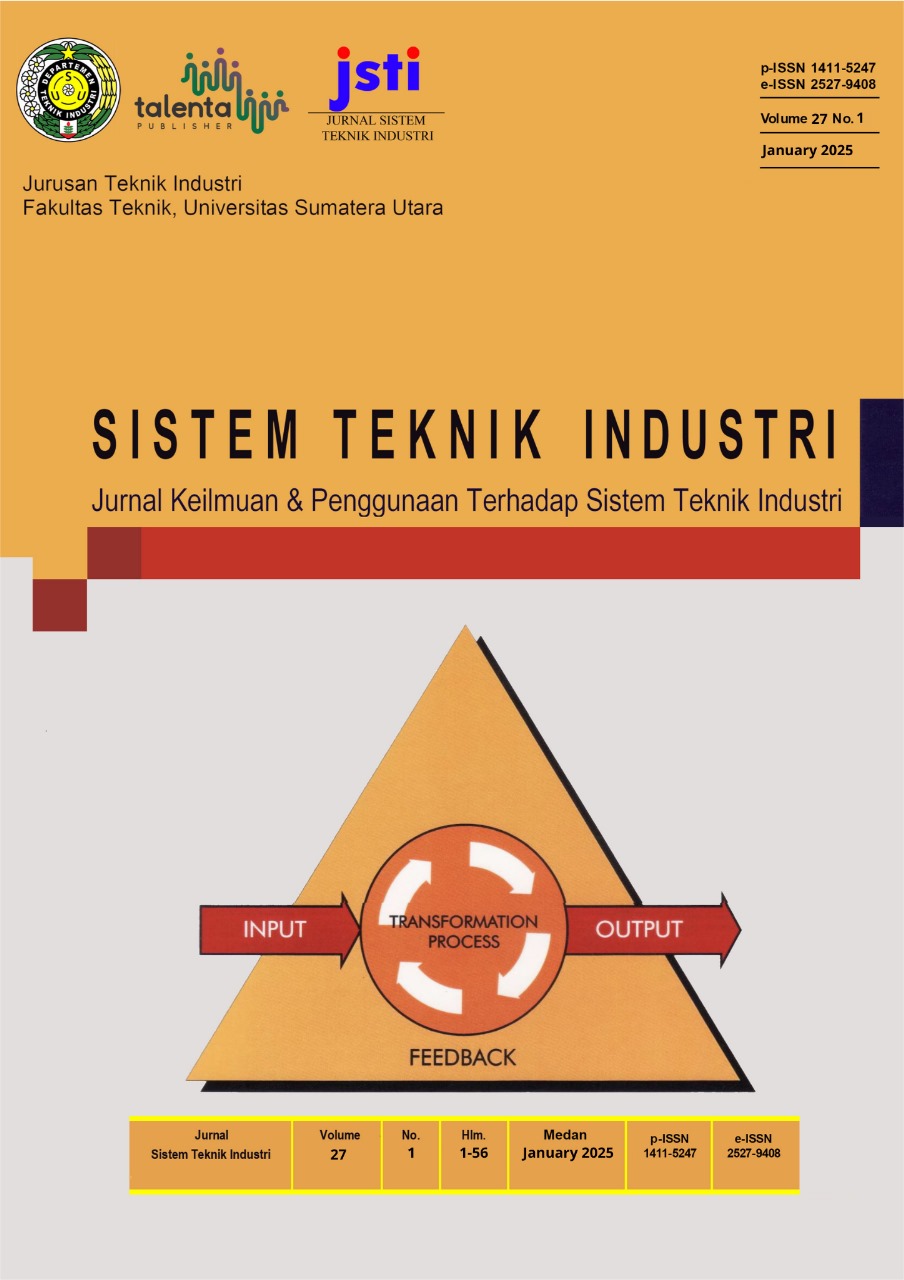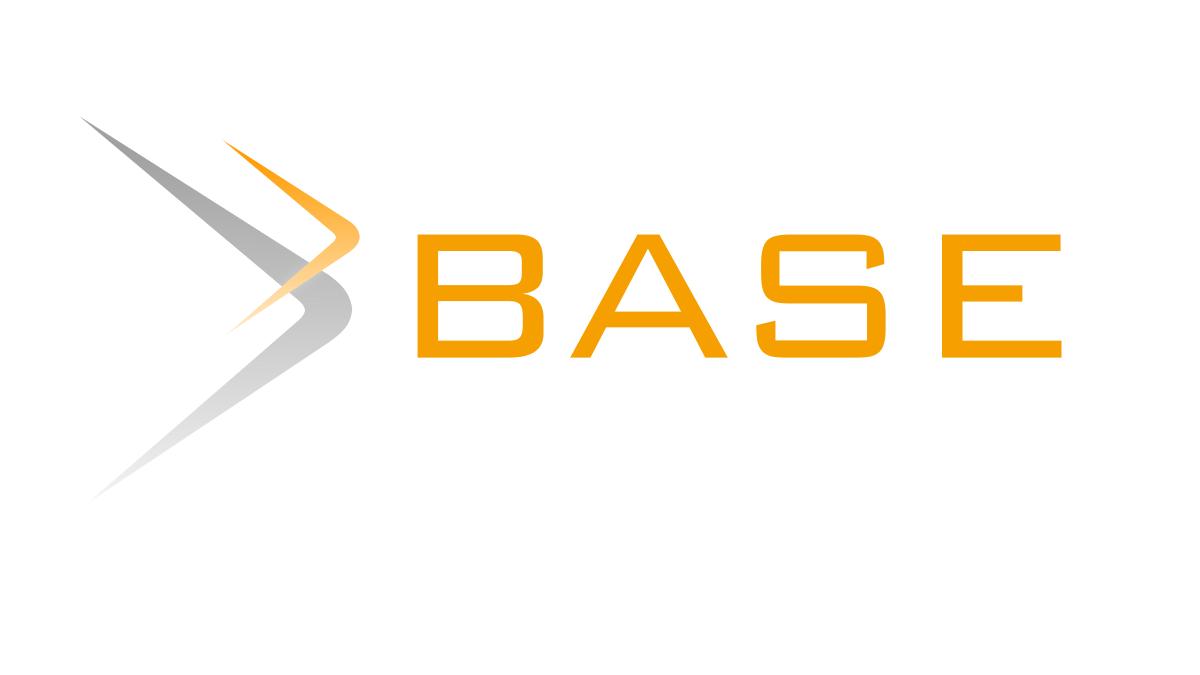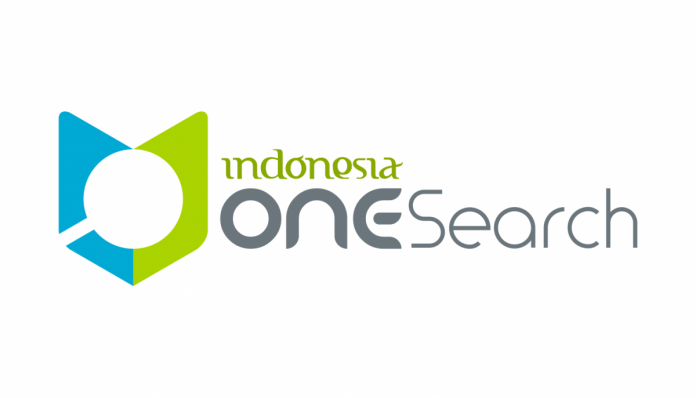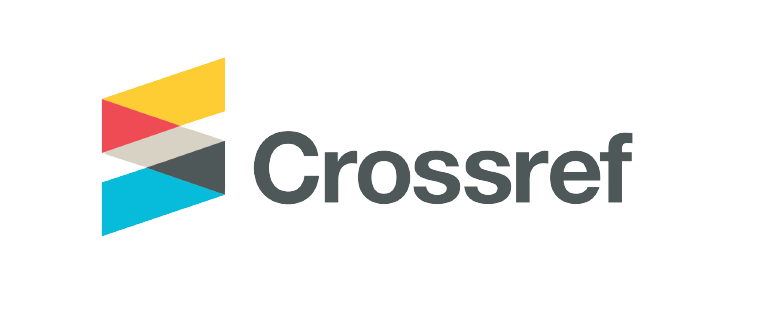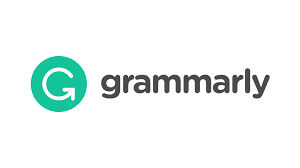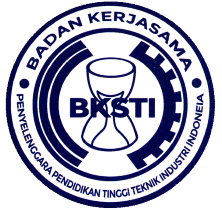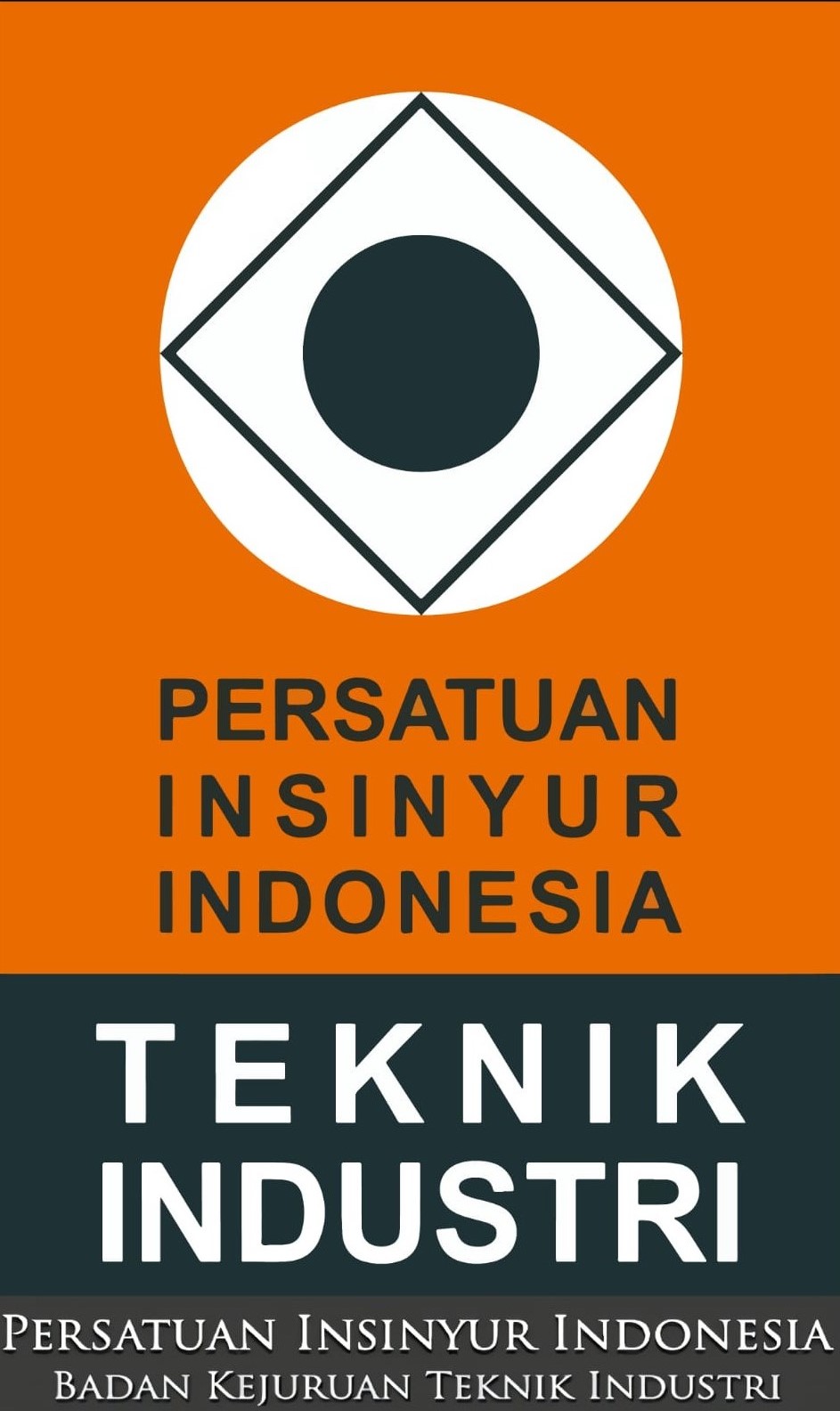Unlocking Indonesia's Maritime Potential: Optimizing Hub Port Development using a Principal Component Analysis and K-Means Clustering
DOI:
https://doi.org/10.32734/jsti.v27i1.18606Keywords:
Optimize Hub Port Development, Principal Component Analysis, K-Means Clustering, Hub Port Connectivity, Effectiveness and EfficiencyAbstract
Indonesia as a maritime country, most of the transportation in Indonesia is carried out by using sea transportation around 88%. However, the Logistics Performance Index (LPI) of Indonesia is alarming and declining from 3.15 in 2018 to 3.0 in 2023, particularly in Timeliness (3.7 to 3.0) and Tracking & Tracing (3.3 to 3.0). Therefore, it needs a comprehensive improvement strategy, especially to optimize the hub port connectivity. This study would like to establish the new hub port connectivity in Indonesia to increase the effectiveness and efficiency of the port. This study use Principle Component Analysis (PCA) to determine the variable, eliminate the correlation among variables to obtain the new variables as the clustering determinants factor, and use Clustering K-Means to group similar characteristics of the alternative port that can be used as the main port. The result of Principle Component Analysis (PCA) which has gained new variables are regional spatial system, national transportation system, national defense, operational cost, and port services. The result of K-Means Clustering, Tanjung Priok, Panjang, Tanjung Emas, Tanjung Perak, Palembang, Teluk Bayur, and Belawan are the main port or hub port connectivity to increase the effectiveness and efficiency in the sea transportation. Tanjung Priok and Panjang can connect Java and Sumatra, while Tanjung Emas and Tanjung Perak can link Java and South Kalimantan. Palembang, Teluk Bayur, and Belawan can also play important roles in their respective regions. By investing in infrastructure and improving connectivity, Indonesia can enhance the efficiency and competitiveness of its maritime trade.
Downloads
References
M. B. Zaman, I. Vanany, and K. D. Awaluddin, “Connectivity analysis of port in Eastern Indonesia,” Procedia Earth Planet. Sci., vol. 14, pp. 118–127, 2015.
“Home | Logistics Performance Index (LPI).” Accessed: Dec. 19, 2024. [Online]. Available: https://lpi.worldbank.org/
S. Balakrishnan, T. Lim, and Z. Zhang, “A methodology for evaluating the economic risks of hurricane-related disruptions to port operations,” Transp. Res. Part Policy Pract., vol. 162, pp. 58–79, 2022.
Z. Fang, H. Yu, F. Lu, M. Feng, and M. Huang, “Maritime network dynamics before and after international events,” J. Geogr. Sci., vol. 28, no. 7, pp. 937–956, Jul. 2018, doi: 10.1007/s11442-018-1514-9.
W. Li, A. Asadabadi, and E. Miller-Hooks, “Enhancing resilience through port coalitions in maritime freight networks,” Transp. Res. Part Policy Pract., vol. 157, pp. 1–23, 2022.
C. Ferrari, L. Persico, and A. Tei, “Covid-19 and seaborne trade: The Italian perspective,” Res. Transp. Econ., vol. 93, p. 101162, 2022.
L. Rousset and C. Ducruet, “Disruptions in Spatial Networks: a Comparative Study of Major Shocks Affecting Ports and Shipping Patterns,” Netw. Spat. Econ., vol. 20, no. 2, pp. 423–447, Jun. 2020, doi: 10.1007/s11067-019-09482-5.
T. Saito, R. Shibasaki, S. Murakami, K. Tsubota, and T. Matsuda, “Global maritime container shipping networks 1969–1981: Emergence of container shipping and reopening of the Suez Canal,” J. Mar. Sci. Eng., vol. 10, no. 5, p. 602, 2022.
J. Verschuur, E. E. Koks, and J. W. Hall, “Port disruptions due to natural disasters: Insights into port and logistics resilience,” Transp. Res. Part Transp. Environ., vol. 85, p. 102393, 2020.
B. P. S. Indonesia, “Statistik Transportasi Laut 2023.” Accessed: Dec. 19, 2024. [Online]. Available: https://www.bps.go.id/id/publication/2024/11/25/3fcd0493a7b0a2de5a18004b/sea-transportation-statistics-2023.html
J. M. Low, S. W. Lam, and L. C. Tang, “Assessment of hub status among Asian ports from a network perspective,” Transp. Res. Part Policy Pract., vol. 43, no. 6, pp. 593–606, 2009.
J. Y. Kim and Y. Park, “Connectivity analysis of transshipments at a cargo hub airport,” J. Air Transp. Manag., vol. 18, no. 1, pp. 12–15, 2012.
J. I. Castillo-Manzano, L. López-Valpuesta, and D. J. Pedregal, “What role will hubs play in the LCC point-to-point connections era? The Spanish experience,” J. Transp. Geogr., vol. 24, pp. 262–270, 2012.
X. Bai, L. Cheng, D. Yang, and O. Cai, “Does the traffic volume of a port determine connectivity? Revisiting port connectivity measures with high-frequency satellite data,” J. Transp. Geogr., vol. 102, p. 103385, 2022.
A. Asadabadi and E. Miller-Hooks, “Maritime port network resiliency and reliability through co-opetition,” Transp. Res. Part E Logist. Transp. Rev., vol. 137, p. 101916, 2020.
J. Guo, S. Guo, and J. Lv, “Potential spatial effects of opening Arctic shipping routes on the shipping network of ports between China and Europe,” Mar. Policy, vol. 136, p. 104885, 2022.
Y. He, Y. Yang, M. Wang, and X. Zhang, “Resilience analysis of container port shipping network structure: The case of China,” Sustainability, vol. 14, no. 15, p. 9489, 2022.
L. Kang, W. Wu, H. Yu, and F. Su, “Global container port network linkages and topology in 2021,” Sensors, vol. 22, no. 15, p. 5889, 2022.
J. Corey, Q. Wang, J. Zheng, Y. Sun, H. Du, and Z. Zhu, “Container transshipment via a regional hub port: A case of the Caribbean Sea region,” Ocean Coast. Manag., vol. 217, p. 105999, 2022.
D. Tsiotas and C. Ducruet, “Measuring the effect of distance on the network topology of the Global Container Shipping Network,” Sci. Rep., vol. 11, no. 1, p. 21250, 2021.
D. Tocchi, C. Sys, A. Papola, F. Tinessa, F. Simonelli, and V. Marzano, “Hypergraph-based centrality metrics for maritime container service networks: A worldwide application,” J. Transp. Geogr., vol. 98, p. 103225, 2022.
J. Wu, J. Lu, L. Zhang, and H. Fan, “Spatial heterogeneity among different-sized port communities in directed-weighted global liner shipping network,” J. Transp. Geogr., vol. 114, p. 103781, 2024.
Z. Li, H. Li, Q. Zhang, and X. Qi, “Data-driven research on the impact of COVID-19 on the global container shipping network,” Ocean Coast. Manag., vol. 248, p. 106969, 2024.
S. Abbes, “Seaport competitiveness: a comparative empirical analysis between North and West African countries using principal component analysis,” Int. J. Transp. Econ. Riv. Internazionale Econ. Dei Trasp. XLII 3 2015, pp. 289–314, 2015.
M. Kanrak and H.-O. Nguyen, “An analysis of connectivity, assortativity and cluster structure of the Asian-Australasian cruise shipping network,” Marit. Transp. Res., vol. 3, p. 100048, 2022.
H. Sutomo and J. Soemardjito, “Assessment Model of the Port Effectiveness and Efficiency (Case Study: Western Indonesia Region),” Procedia-Soc. Behav. Sci., vol. 43, pp. 24–32, 2012.
D. T. Pham and A. A. Afify, “Clustering techniques and their applications in engineering,” Proc. Inst. Mech. Eng. Part C J. Mech. Eng. Sci., vol. 221, no. 11, pp. 1445–1459, Nov. 2007, doi: 10.1243/09544062JMES508.
C. Ding and X. He, “K -means clustering via principal component analysis,” in Twenty-first international conference on Machine learning - ICML ’04, Banff, Alberta, Canada: ACM Press, 2004, p. 29. doi: 10.1145/1015330.1015408.
K. P. Sinaga and M.-S. Yang, “Unsupervised K-means clustering algorithm,” IEEE Access, vol. 8, pp. 80716–80727, 2020.
H. B. Umar, “Principal Component Analysis (PCA) dan aplikasinya dengan SPSS,” J. Kesehat. Masy. Andalas, vol. 3, no. 2, pp. 97–101, 2009.
H. W. Oetomo, “Analisis Faktor Ruangan yang Berpengaruh Terhadap Nilai Tanah Perkotaan,” Econ. J. Emerg. Mark., 2006, Accessed: Dec. 19, 2024. [Online]. Available: https://journal.uii.ac.id/JEP/article/view/524
J. O. Ong, “Implementasi algoritma k-means clustering untuk menentukan strategi marketing president university,” 2013.
Y. Ardilla, H. Tjandrasa, and I. Arieshanti, “Deteksi Penyakit Epilepsi dengan Menggunakan Entropi Permutasi, K-means Clustering, dan Multilayer Perceptron,” J. Tek. ITS, vol. 3, no. 1, pp. A70–A74, 2014.
S. Agustina, D. Yhudo, H. Santoso, N. Marnasusanto, A. Tirtana, and F. Khusnu, “Clustering Kualitas Beras Berdasarkan Ciri Fisik Menggunakan Metode K-Means,” Univ. Brawijaya Malang Malang, 2012, Accessed: Dec. 19, 2024. [Online]. Available: https://www.academia.edu/download/46692771/clustering-kualitas-beras-dengan-k-means.pdf
R. Kammoun and C. Abdennadher, “Seaport efficiency and competitiveness in European seaports,” Transp. Policy, vol. 121, pp. 113–124, 2022.
Q. Liu, Y. Yang, L. Ke, and A. K. Ng, “Structures of port connectivity, competition, and shipping networks in Europe,” J. Transp. Geogr., vol. 102, p. 103360, 2022.
B. Tovar, R. Hernández, and H. Rodríguez-Déniz, “Container port competitiveness and connectivity: The Canary Islands main ports case,” Transp. Policy, vol. 38, pp. 40–51, 2015.
P. N. Nguyen and H. Kim, “Analyzing the international connectivity of the major container ports in Northeast Asia,” Marit. Bus. Rev., vol. 7, no. 4, pp. 332–350, 2022.
D. Sjarifudin and H. Kurnia, “The PDCA approach with seven quality tools for quality improvement men’s formal jackets in Indonesia garment industry,” J. Sist. Tek. Ind., vol. 24, no. 2, pp. 159–176, 2022.
N. Matondang and A. Ishak, “A Literature Review of Distribution Solving Problems by Various Transportation Methods,” J. Sist. Tek. Ind., vol. 25, no. 2, pp. 178–187, 2023.
Y. Prawira, A. Ishak, and A. Anizar, “A Review of Literature on Lean Manufacturing Tools and Implementation Based on Case Studies,” J. Sist. Tek. Ind., vol. 26, no. 1, pp. 11–21, 2024.
X. Zhu, Smart Road Infrastructure: Ideas, Innovations and Emerging Technologies. in Lecture Notes in Intelligent Transportation and Infrastructure. Singapore: Springer Nature Singapore, 2024. doi: 10.1007/978-981-97-3831-1.
R. Krishnan and Y. Shukla, “Use of geospatial technologies in transport infrastructure”, Accessed: Dec. 24, 2024. [Online]. Available: https://www.researchgate.net/profile/Yogita-Shukla/publication/292971616_Innovative_Geospatial_Solutions_-_Key_to_India%27s_Transport_Infrastrcuture/links/56b2f25608aed7ba3fedf0fd/Innovative-Geospatial-Solutions-Key-to-Indias-Transport-Infrastrcuture.pdf
M. Gómez-Ballesteros et al., “Transboundary cooperation and mechanisms for Maritime Spatial Planning implementation. SIMNORAT project,” Mar. Policy, vol. 127, p. 104434, 2021.
H. Sandee, “Improving Connectivity in Indonesia: The Challenges of Better Infrastructure, Better Regulations, and Better Coordination,” Asian Econ. Policy Rev., vol. 11, no. 2, pp. 222–238, Jul. 2016, doi: 10.1111/aepr.12138.
Downloads
Published
How to Cite
Issue
Section
License
Copyright (c) 2025 TALENTA Publisher Universitas Sumatera Utara

This work is licensed under a Creative Commons Attribution-ShareAlike 4.0 International License.
The Authors submitting a manuscript do so on the understanding that if accepted for publication, the copyright of the article shall be assigned to TALENTA Publisher Universitas Sumatera Utara as the publisher of the journal.
Copyright encompasses the rights to reproduce and deliver the article in all forms and media. The reproduction of any part of this journal, its storage in databases, and its transmission by any form or medium will be allowed.

